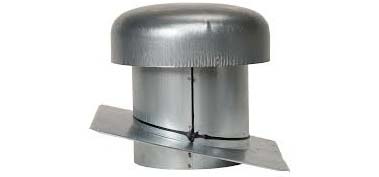Table of Contents
Importance of Roof Ventilation
Enhances Indoor Air Quality
Effective ventilation ensures that stale air, odors, and pollutants are continuously expelled from the interior, promoting a healthier living environment for occupants.
Prevents Moisture Build-up
Proper ventilation helps to mitigate moisture accumulation in the attic or crawl space, reducing the risk of mold growth, wood rot, and structural damage.
Understanding Mobile Home Roof Vent Caps
Roof vent caps are designed to cover and protect exhaust vents, allowing air to escape while preventing debris, pests, and inclement weather from entering the ventilation system. There are various types of vent caps available, including ridge vents, gable vents, and turbine vents, each serving specific purposes.
Materials commonly used for vent caps include galvanized steel, aluminum, and durable plastics, with each offering different levels of durability and weather resistance.
Signs You Need a New Roof Vent Cap
Identifying when a supermanfanart.com/ needs replacement is crucial for maintaining optimal ventilation and protecting the integrity of the mobile home.
- Visible Damage: Cracks, rust, or physical deformities on the vent cap indicate wear and tear.
- Leaks: Water stains or moisture accumulation around the vent area suggest a compromised seal.
- Poor Airflow: Reduced airflow or unusual odors inside the home may indicate ventilation issues.
How to Choose the Right Vent Cap
Selecting the appropriate vent cap for your mobile home involves considering several factors to ensure optimal performance and longevity.
Consider Roof Type
Different roof designs require specific vent cap configurations to ensure proper fit and functionality.
Size Matters
Choosing a vent cap that matches the size of your existing vents is essential to maintain consistent airflow and prevent air leaks.
Durability and Weather Resistance
Opt for vent caps made from durable materials that can withstand harsh weather conditions and prolonged exposure to sunlight.
Installation Process
Installing a new roof vent cap can be a straightforward DIY project with the right tools and instructions.
Preparation
Before installation, inspect the existing vent area for any damage or debris that may impede proper sealing.
Tools Required
Gather essential tools such as a screwdriver, sealant, roofing nails, and a ladder to safely access the roof.
Step-by-Step Installation Guide
- Remove the old vent cap and clean the surrounding area.
- Position the new vent cap over the vent opening and secure it in place.
- Apply a generous amount of sealant around the base of the vent cap to prevent water infiltration.
- Secure the vent cap with roofing nails or screws, ensuring a tight seal.
Maintenance Tips
Regular maintenance is essential to ensure the longevity and effectiveness of your mobile home roof vent cap.
- Regular Inspections: Periodically inspect the vent cap for signs of damage or wear.
- Cleaning: Remove any debris or obstructions that may hinder airflow.
- Repairs: Promptly address any issues such as leaks or loose fittings to prevent further damage.
Cost of Replacement
The cost of replacing a mobile home roof vent cap varies depending on several factors, including the type of vent cap, labor costs, and geographic location.
Factors affecting cost include the complexity of the installation process, the quality of materials used, and whether professional services are required.
DIY vs. Professional Installation
Deciding whether to install a new roof vent cap yourself or hire a professional depends on various factors, including your level of expertise, available time, and budget.
Pros of DIY Installation
- Cost-effective
- Greater control over the installation process
- Satisfaction of completing a home improvement project
Cons of DIY Installation
- Risk of improper installation leading to leaks or damage
- Time-consuming and labor-intensive
- May void warranties if installation is not performed correctly
Pros of Professional Installation
- Expertise and experience ensure proper installation and optimal performance
- Saves time and effort
- Warranty coverage and guarantees on workmanship
Cons of Professional Installation
- Higher upfront costs
- Limited control over the installation process
Conclusion
Mobile home roof vent caps play a vital role in maintaining proper ventilation and protecting the interior of the home from moisture and debris. By understanding the importance of roof ventilation, choosing the right vent cap, and following proper installation and maintenance practices, homeowners can ensure a healthy and comfortable living environment.





_3-6.jpg)




